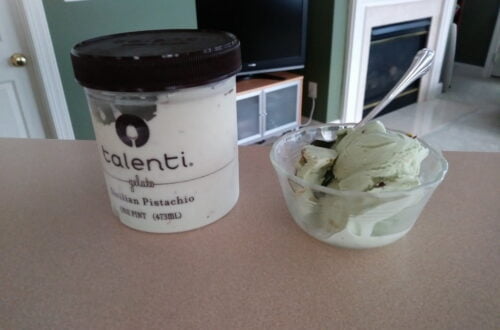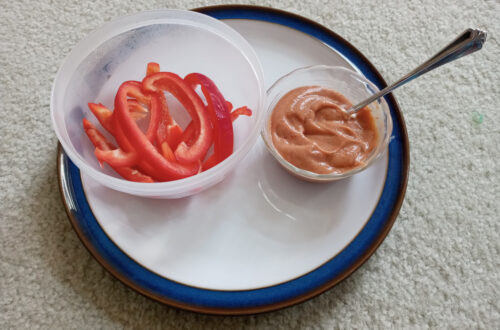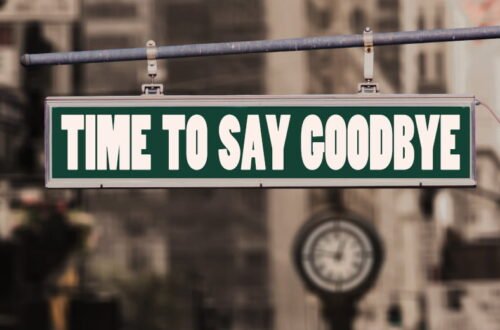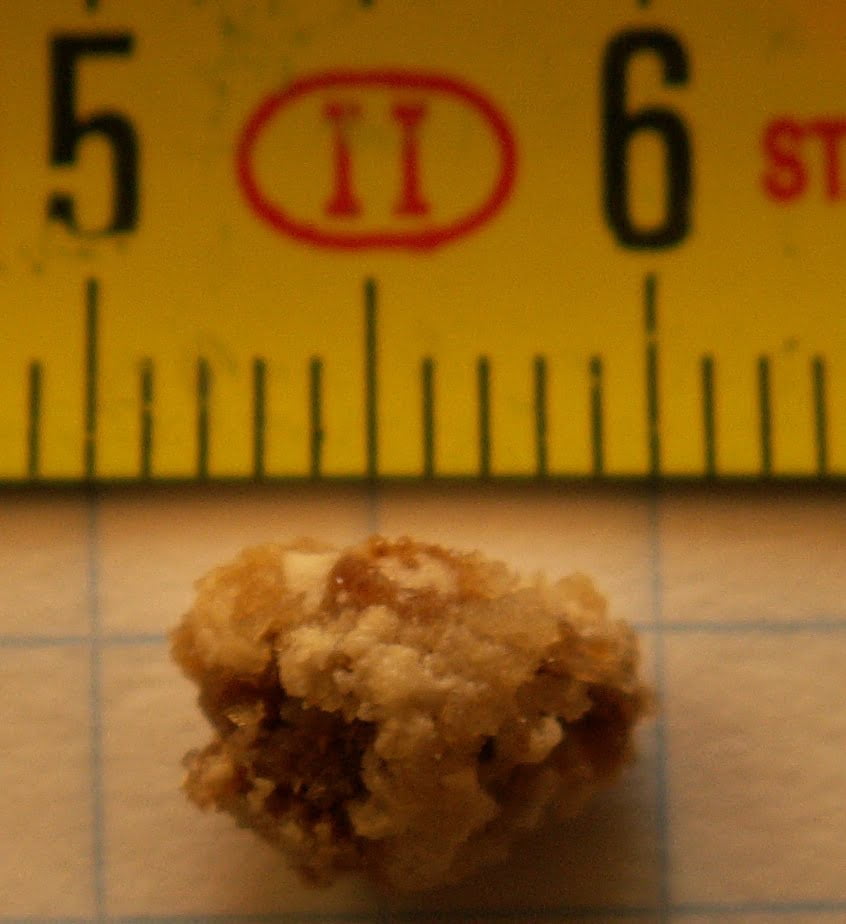
My Second Kidney Stone Attack
Updated on 2025-08-23
Disclaimer: The following is not medical advice and is provided for informational purposes only.
My first kidney stone attack occurred about 23 years ago. I awoke in the morning of April 15 this year with pain in the lower right quadrant of my back while lying on my left side. I was groggy from being asleep and thoughts about another kidney stone ran through my mind. I turned over on my right side and the pain subsided. I immediately experienced the same pain again when I got out of bed, so my fear was confirmed. I was experiencing my second kidney stone attack.
I was frustrated because I wasn’t sure what, if anything, I might have done to cause a second kidney stone attack after so many years since my first attack. I commenced to research the Internet and came across some wonderful resources about kidney stones. The best resource in my opinion is on the University of Chicago site.
I initially came across the How to Eat a Low Oxalate Diet article by a nurse named Jill Harris on the Univerity of Chicago site. I also found a list of foods and their oxalate (oxalic acid) content put together by Dr. Frederic Coe and Jill Harris. Jill Harris offers a kidney stone prevention course and has also provided a searchable oxalate food list, leaving out some of the content in the Oxalate Content of Food By Food. Information about the differences between the two lists can be found here.
The list of foods and their oxalate content was of particular interest to me because my first kidney stone was a calcium oxalate stone, the most common form of kidney stone. Dr. Coe has also written a very informative and detailed kidney stone guide book, currently only available online. Jill Harris has a nice collection of blog posts on her kidney stone prevention course site as well.
During my research of oxalate and kidney stones, I also came across a site created by a kidney stone patient. The site contains a searchable list of over 750 food items and their oxalate content. The list includes data from Harvard University, the same data used for the Oxalate Content of Food By Food list. Some of the food items on the site are listed at 100 grams, which is just over 3.5 ounces. Keep in mind that the information on this site is not guaranteed to be accurate, some of the information is quite dated (1962), and there is no indication of when the site was last updated.
I’ve created a list in spreadsheet format (Excel and Open Document Format) based on the Oxalate Content of Food By Food list . You should also download and use the GPG signature to verify that the file hasn’t been tampered with. The file should be verified before decompressing or extracting. You will also need the Shared Bits public key and verification software.
The spreadsheets I’ve provided do not include the oxalate category in the Oxalate Content of Food By Food list. In my mind, there is a big difference between a food item containing 13 mg of oxalate and one containing 100 mg or more. Therefore, I’ve color-coded those food items and oxalate amounts that exceed 9 mg in the provided spreadsheets; orange for food items containing 10 mg – 49 mg and red for food items containing 50 mg or higher. I should also point out that I discovered a discrepancy in both of the current Oxalate Content of Food By Food and Your Simple & Safe Oxalate Food List lists. There are two different oxalate amounts for pancakes; reference pancakes under Breads & Grains – Breads and under Breakfast Items.
If you’re not a producer of calcium oxalate stones or you do not have a disease or condition that prohibits you from consuming foods high in oxalate content, then you probably don’t need to be concerned about the oxalate content of foods. Additionally, Dr. Coe authored a nice article indicating that one can decrease the chances of producing idiopathic calcium stones by:
- reducing sodium consumption
- reducing processed sugar consumption
- reducing oxalate consumption
- reducing protein consumption
- taking a calcium supplement with the meal containing the highest oxalate content of the day
- increasing daily water consumption
After reading Dr. Coe’s article, I’ve decided to lower my sodium and processed sugar intake (no more sweet tea…sigh) and I’ve began using powdered calcium citrate or drinking milk when I consume foods high in oxalate content, like loaded baked potatoes.
Dr. Coe’s kidney stone guide book is free, but I can understand some people having a tough time wading through all of the information provided. If you have a kidney stone and are confused about the experience and what your doctor has or hasn’t explained to you, Jill Harris offers a kidney stone prevention course. The course will cost you some money though.
Update: I passed the stone early in the morning on 05/28/2019. The stone measures approximately 1-cm in length and 1/2-cm in width. The stone very well demonstrates the results of supersaturation discussed in Dr. Coe’s kidney stone guide book.
What a wicked looking thing; no wonder I was in so much pain and I passed quite a bit of blood with this stone. I don’t remember passing any blood with my first stone, although I don’t think my first stone was as big. I also experienced a range of sensations with my second stone besides the pain. There was a period where I had 10 bowel movements in less than 48 hours. I’m pretty certain the bowel movement frequency was caused by the pain I was experiencing at the time. I also had about a 3 or 4 day period not long before I passed the stone where I frequently felt the urge to urinate.
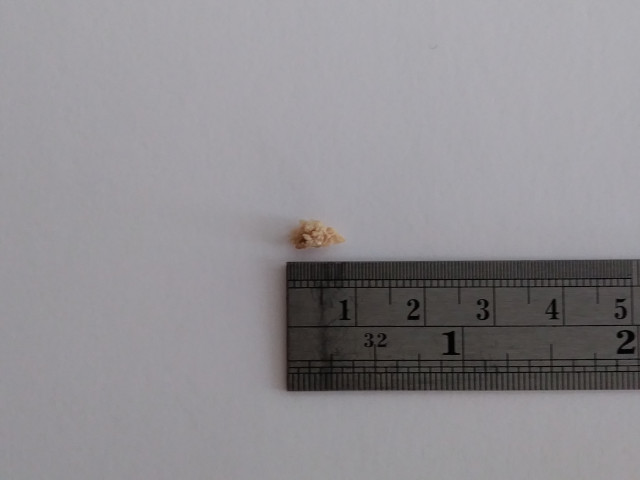 | 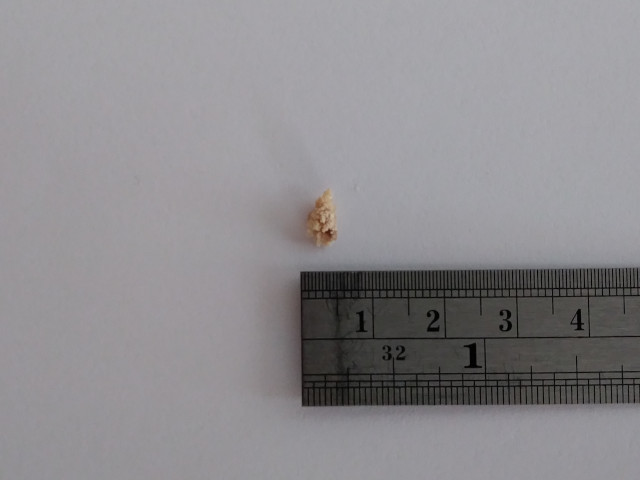 |
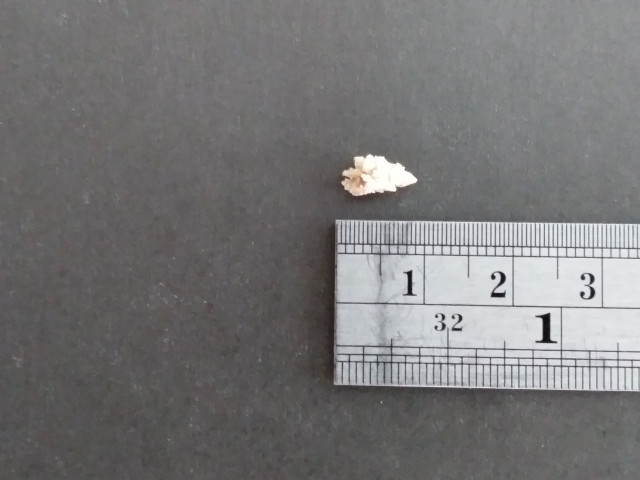 | 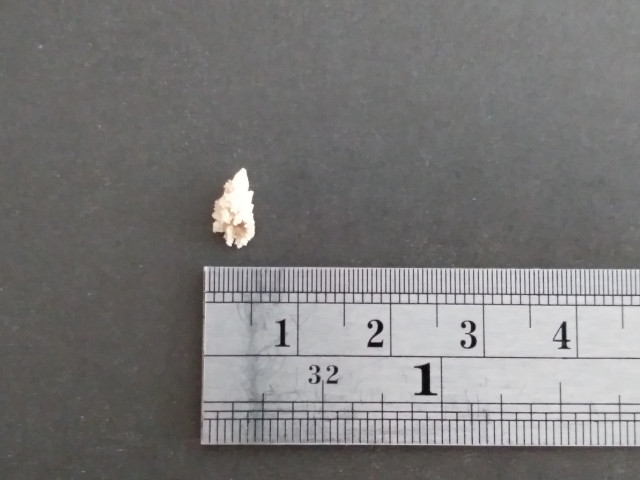 |
I experienced my third kidney stone in 2023. You can read more about it here.
Post header image courtesy of Robert R. Wal.
2019-005


